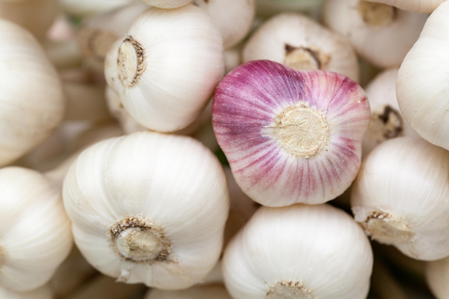
Shimla, June 19 (IANS) Garlic cultivation in Himachal Pradesh’s Sirmaur district has expanded to around 4,000 hectares from 1,500 hectares in 2015-16, with annual production reaching 60,000 metric tons, agriculture experts said on Thursday.
At a two-day seminar on ‘Garlic seed production and value addition for enhancing farmers’ Income in district Sirmaur’ that commenced at Dr. YS Parmar University of Horticulture and Forestry (UHF) in Nauni in Solan district, Department of Seed Science and Technology head Narender Bharat said the university has been implementing the project to propagate spices in the state since 2015-16.
“The initiative promotes commercial cultivation of spices like garlic, ginger, turmeric, coriander, and fenugreek through on-farm demonstrations, seed production, technology transfer, natural farming practices, and infrastructure development for seed storage,” he said.
As part of the technology transfer efforts, the university organised four panchayat-level training programmes and one district-level seminar every year.
Highlighting the growing interest in garlic farming, Bharat shared that the area under garlic cultivation in Sirmaur has expanded. As per estimates, nearly Rs 60 crore is spent annually in Sirmaur for procuring garlic seeds from other states, particularly Jammu and Kashmir.
University Vice Chancellor Rajeshwar Singh Chandel said spice cultivation, especially garlic, which has been declared as the ‘One District, One Crop’ for Sirmaur, offers a promising pathway to boost farmers’ income in the district.
Highlighting the issues of market glut and falling prices, he called upon scientists to equip farmers with skills in food processing and value addition.
Chandel urged the farmers to collaborate with the university for local seed production of garlic to reduce dependence on external sources and create entrepreneurial opportunities for the youth.
He also encouraged university researchers to explore garlic oil extraction and the pharmaceutical industry’s needs to further enhance farm income. He stressed the need to study the use of radiation technology to improve garlic’s shelf life, disease resistance, and reduce unwanted sprouting.
Director (Research) Sanjeev Chauhan emphasised the need for adopting modern scientific practices to improve the quality and productivity of garlic.
He advocated reducing input costs to increase farmers’ profitability and underlined the role of Farmer Producer Companies (FPCs) in ensuring better market access and collective bargaining for farmers.
Based on farmer demand, key topics such as seed production, germplasm conservation, plant protection and value addition will be discussed.
The Department of Food Science and Technology will also conduct hands-on demonstrations for preparing various value-added garlic products.
In addition, an exhibition-cum-competition of local garlic varieties is also being organised for the participating farmers. The seminar is being organised by the university’s Department of Seed Science and Technology under the centrally-sponsored MIDH scheme on spices.
Around 100 garlic growers are participating in the programme.
–IANS
vg/dan
